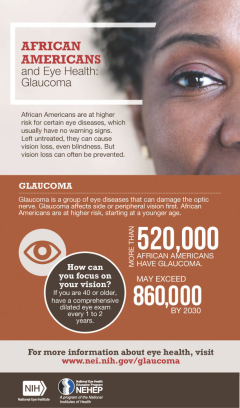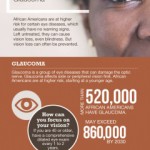Find out if glaucoma runs in your family
It may be easy to see that beauty is deeply rooted in your family tree. But some things that are passed down from generation to generation are not as easily seen – like glaucoma, an eye disease that runs in families and often has no warning signs.
Glaucoma is a group of diseases that damages the eye’s optic nerve, which carries visual signals to the brain. It can lead to vision loss or blindness if left untreated. Primary open-angle glaucoma is the most common form of this disease. Quite often, by the time people are diagnosed with glaucoma they have already begun to notice changes in their side, or peripheral, vision. It’s important not to wait until you notice vision problems to see your eye care professional.
“Studies show that at least half of all persons with glaucoma don’t know they have this potentially blinding eye disease,” said National Eye Institute (NEI) director Dr. Paul Sieving. “The good news is that glaucoma can be detected in its early stages through a comprehensive dilated eye exam.”
People with a family history of glaucoma, African Americans age 40 and older, and everyone age 60 and older are at higher risk and should get a comprehensive dilated eye exam every one to two years.
A comprehensive dilated eye exam is a procedure in which an eye care professional places drops in your eyes to dilate (or widen) the pupil to examine the back of your eyes and your optic nerve for signs of disease. This exam may help save your sight because when glaucoma is detected early, it can be controlled through medications or surgery.
Keep the vision of your beautiful family in your future. To learn more about glaucoma, visit www.nei.nih.gov/glaucoma or call NEI at 301– 496 – 5248. A low-cost exam may be available to you through Medicare. For more information, call 1–800–MEDICARE or visit www.medicare.gov.




